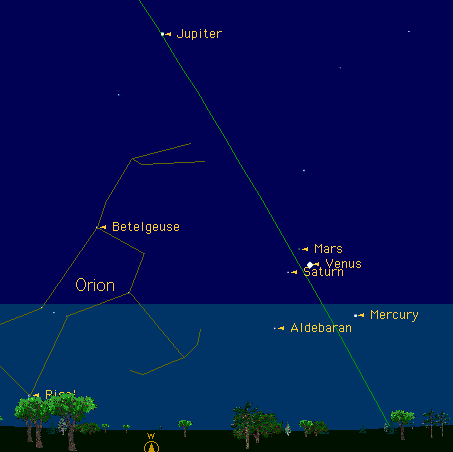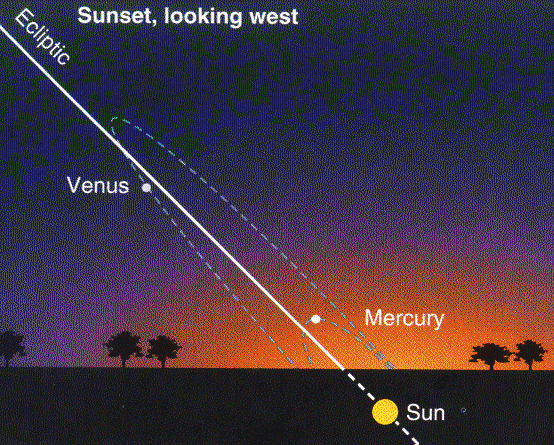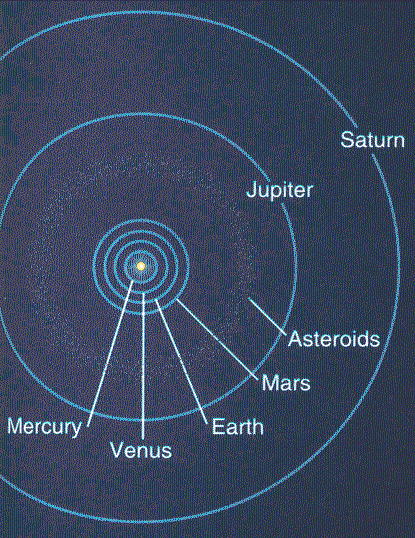Date: Saturday, May 4, 2002:
FOUR PLANETS PLUS JUPITER
GROUPING JUST AFTER SUNSET
Tomorrow
and Monday nights will be a chance (particularly if one lives where the sun
blazes until it goes below the horizon) to see four planets grouped near the
just set sun.


Mercury, Venus, Mars, and Saturn will all be visible in the evening sky right
after sunset. Jupiter too can be seen higher in the sky in the ecliptic plane's line through the sky. You might want to take a look. If you have binoculars,
you will do much better. Mercury orbits the sun in 88 days. The last
time it had an maximum elongation (as today's is) in the evening sky was
January 11. I looked in the text for the class to get the January maximum elongation. The time from January 11
to May 4 is 113 days, or about 1 1/3 orbital periods of Mercury. 113 days
is about 1/3 of the 365 days that it takes the earth to rotate around the
sun. So Mercury had to go 1/3 further around the sun than one orbit
because we on earth had moved ahead 1/3 of an orbit...and it is the relative
position of Mercury in relationship to us and the sun that makes the difference
of whether we can see Mercury. As you may expect Mercury will be an
evening star again in about 113 days (actually 118 days), or September
1.
Anyway, it
is a rather rare occurrence, and you might like to look. The phenomenon
will not last long (only a few days), as Mercury moves quickly, and will be at
its greatest "Morning Star" elongation by June 21, or in 48 days (as
maximum elongation from the sun means that Mercury 's radius from the sun
is at right angles to our line of sight to Mercury), so Mercury is thus passing
between the sun and the earth, and then will again go around the other side of
the sun.
Venus's maximum
elongation will occur August 22, and so it will be rising later (until August
21), thus being in a darker sky, and coming closer to Earth, meaning we should
have a beautiful evening star this summer.





